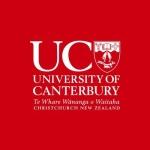Tough to be a boy
A research team based at the University of Canterbury has found that adult males were rare in the moa world.
The team’s findings, published in the prestigious Quaternary Science Reviews, confirm that the sex ratios in the giant flightless birds were highly skewed towards females and that the disparity developed after the birds matured.
“Using high-end ancient DNA technology we genetically sexed 227 moa and found that females outnumbered males by 5 to 1,” said project leader Professor Richard Holdaway, of Palaecol Research Ltd, who is also a fixed-term professor in UC’s School of Biological Sciences.
“Male moa lost out to females as they grew up,” he said.
“Analysis of ancient DNA from several dozen stout-legged moa (Euryapteryx curtus) – one of four moa species under scrutiny – showed that immature males were as common as females but as adults they made up only a quarter of the population. It seems likely that female moa (who were much larger than the males) were giving the boys a hard time – perhaps being territorial and excluding males from the best habitat.”
The project was funded by an $825,000 Marsden grant awarded to Palaecol Research Ltd in 2006.
The research was carried out on fossil remains from two North Canterbury sites, both of which date to just before Polynesian settlement. Pyramid Valley, one of New Zealand’s best known fossil sites, has been highly regarded for its fossil remains since the 1930s. Less than 6km away, the scientifically comparable Bell Hill Vineyard deposit was discovered and excavated in 2001.
The excellent preservation of DNA in moa bones from both sites allowed University of Canterbury PhD student Morten Allentoft to amplify DNA from more than 260 of the extinct birds. Morten took bone samples to Dr Mike Bunce’s ancient DNA laboratory at Murdoch University in Perth, where he was able to extract mitochondrial and nuclear DNA and genetically identify and sex the birds, including, for the first time, many adolescents.
“The preservation of the DNA in these fossils is just amazing,” said Morten.
“The fact that we could extract nuclear DNA from most of these bones opens up many new possibilities in ancient DNA research and offers high resolution genetic insights into moa population biology. Uncovering these crazy sex ratios is just the beginning.”
Professor Holdaway said the study not only added to scientists’ understanding of moa biology but showed the value of analyzing fossils from more than one site in an area.
“The two sites provided opportunities for comparative analysis and insights at levels that would not have been available for sites in isolation.”
Professor Holdaway said the aim was now to build on this information to a level that could allow estimates of changes in moa population size through time, and a much better understanding of their population dynamics.
